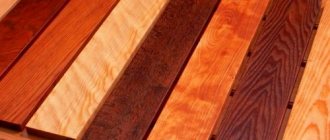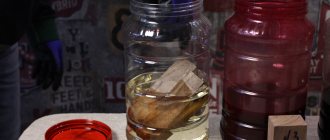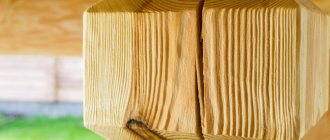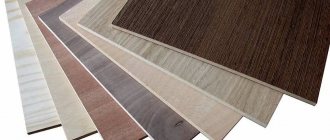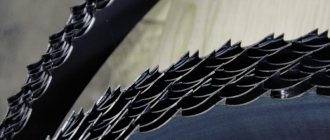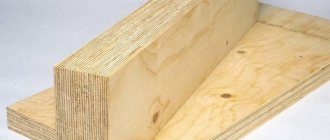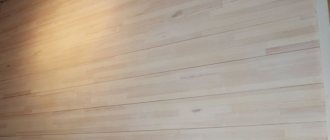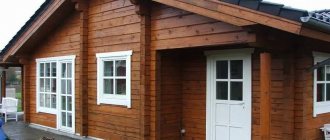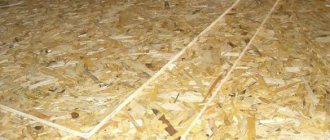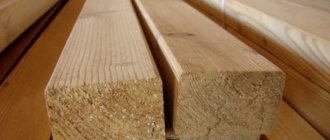Great demand for construction and finishing materials made of wood is associated with the cleanliness, environmental friendliness and good qualities of wood. In recent decades, other raw materials have been actively developed that are not affected by moisture, deformation, rotting and other defects. However, synthetic products often capture the beneficial properties of wood, so developments to find new ways to increase the durability and qualities of natural materials continue today. The pinnacle of hardening beams, boards and other lumber is the heat treatment method.
Wood heat treatment technology
For the first time, the method of heat treatment of wood appeared in Finland. It was the inhabitants of this country who discovered an increase in the resistance of the material to atmospheric influences as a result of heat treatment of birch, pine and aspen.
According to their methodology, the process requires passing the material through several stages:
- Removing moisture from timber fibers by drying in closed chambers at temperatures from 130 °C to 150 °C.
- At high pressure using water steam, thermal strengthening of lumber continues at temperatures from 200 °C to 240 °C. At this stage, the wood is painted in a characteristic shade.
- Reducing the temperature to bring the percentage of moisture content in the fibers to a level of no more than 4-6%.
As a result of this finishing cycle, the timber obtains a new texture, changed at the molecular level. This is due to the splitting of fibers and the bonds between them, as a result of high pressure and temperature. Thus, the surface becomes less porous, it is able to resist moisture, is less susceptible to deformation under heavy rains, and does not require additional protective coating. Thermal wood can also boast of withstanding high temperature fluctuations and humidity surges by 10-15 times.
The color of the wood after this treatment becomes close to the shade of expensive varieties. Even from the simplest cheap piece of wood you can make a material similar in appearance to larch or other expensive species. Changing the structure increases resistance to rot, mold and insect infestation, which increases the service life of wooden elements by an average of 20 times compared to their natural counterpart.
Description of material
Wood exposed to high temperatures changes its properties and appearance and is called thermowood.
Any type of wood can be subject to thermal modification. The qualities acquired by wood during high-temperature processing make it possible to use this material in damp rooms, in rooms with elevated temperatures or with temperature changes.
The technology for producing thermowood on an industrial scale was developed by Finnish specialists. The Finns use heat-treated pine and spruce in interiors and for finishing facades. Heat-treated birch lumber is used to make floors. Aspen is most often used in saunas, although spruce and pine are also popular.
The action of steam in combination with oils at high temperatures changes the color of the wood throughout the entire volume of the product, the texture of the wood appears more clearly, as a result, an ordinary board looks expensive and noble.
During the processing process, simple sugars decompose in the wood, meaning there are no food sources left for bacteria and fungi. Laboratory tests show that thermowood is resistant to rot and mold, without any additional treatment. In addition, the service life of wooden products increases by 15-25 times.
Thermowood is resistant to high humidity. According to this indicator, it is close to larch. Water seepage as a result of treatment is reduced by 3-5 times. This effect is achieved by changing the surface structure. Untreated wood has a porous top layer that absorbs moisture like a sponge. Whereas with thermowood it is compacted and does not allow water to pass through.
Advantages of thermowood
- Eco-friendly origin.
- Smells like wood without third-party aromas.
- Withstands significant temperature changes.
- Has a low percentage of drying out.
- Long service life.
- The surface quality is very high.
- Throughout the entire cross-section and longitudinal section of the material, the tone is the same, corresponding to the external color.
Due to the significant variation in the temperature regime of timber processing, the following classes of thermal wood are distinguished:
- Class 1 . Material with the lowest performance and a light degree of toning, due to processing at temperatures up to 190 ° C.
- Class 2. The timber gains high strength and resistance to decay with a darker color, but is brittle and less ductile due to processing at 210 °C.
- Class 3. The highest quality lumber with high resistance to aggressive environmental influences, hardness and density. They have a uniform dark shade and a noble surface texture. Produced at 240 °C.
Applications of thermowood
The use of thermowood is due to its unique characteristics. From thermowood you can do everything that is usually made from wood, but this product will last many times longer.
The technology for manufacturing thermowood allows its use in the following areas:
- Facades. For their installation, lining and block house are used. This façade is durable and does not require additional treatment with varnishes or impregnations.
- In rooms with high humidity and temperature, for example, a sauna or bathhouse.
- In places where there is simply high humidity, for example, a deck near a pool.
Heat treatment equipment
There are many manufacturers of equipment for creating thermowood, which use different technologies for the firing process of specific species. The most popular brands are:
- Vacuum Plus;
- Bikos-TMT;
- Fromsseier;
- Menz-Holz;
- Retification;
- PLATO;
- Thermowood;
- Westwood.
Differences and features of thermal chambers
| Technology/company name | Operating temperature range | Duration of one cycle, hours | A country | Wood species |
| Vacuum Plus | 45 for vacuum drying, 165-190 for heat treatment | 3-7 days | Russia | all due to vacuum drying |
| Bikos-TMT | 180-220 | 38-52 | Russia | soft conifers, valuable hard-leaved leaves with a heterogeneous shade |
| Fromsseier | 180-220 | 2-3 days | Denmark | soft conifers |
| Menz-Holz | 180-230 | 32-54 | Germany | all thanks to the addition of organic oils to the steam |
| Retification | 180-220 | 40-62 | France | all due to the use of nitrogen in steam |
| PLATO | 170-210 | 5-8 days | Holland | birch and conifers |
| Thermowood | 180-215 | 45-96 | Finland | soft conifers |
| Westwood | 220-240 | up to 48 | USA | valuable hardwoods: beech, oak, ash |
Read also: Lm339n microcircuit and its application diagram
Heat treatment chamber
The equipment is a tightly closed tank of a certain volume into which lumber is loaded on special stands. It is necessary to ensure steam access to all surfaces of the board or timber. During the processing cycle, depending on the technology in the chamber, the material is dried at high temperatures, air is pumped out or introduced with inert gas, organic oils, fired at extreme temperatures and moisture correction.
Each thermal chamber must be characterized by the following parameters:
- Security level and specifics of device operation control.
- Permissible moisture level of raw materials.
- Duration of the full cycle (depending on technology, wood species, method of pre-processing of lumber).
- The permissible dimensions of the cross-section of the timber, at which the raw material will receive a uniform color throughout the entire thickness.
- Energy consumption and other required resources for the heat treatment process.
- Overall dimensions and volume of the working area, which allows you to increase the amount of wood processing in one cycle.
Heat treatment of wood at home
Creating a heat chamber using a homemade method requires the presence of the following components:
- A tightly closed container that will not allow oxygen to get inside during the heating process.
- Method of energy supply: electric, gas or solid fuel heating of the chamber cavity.
- Containers with water to create the desired level of humidity inside the work area.
- Tools for working with metal, electrical and gas equipment.
The principle of operation of the device is to introduce a container of water into the chamber, which will evaporate as a result of an increase in temperature, preventing lumber from igniting in a mode of 135 ℃. The chamber must be heated so that the desired high temperature is established inside. Most often, an electric heating method is used for this. The ingress of oxygen increases the risk of wood fire, so the chamber must be securely and hermetically closed.
An example of such crafts can be found on various crafts forums. Some present their creations from railway tanks with complex internal structures for installing materials. However, small pieces of wood can be processed differently at home. It is enough to boil the workpiece for about an hour and a half in ordinary water, and then wrap it in warm old clothes or newspapers. Continue drying in this form near a stove or other heat source. This method has been used by woodcarvers for many hundreds of years to strengthen linden.
How is thermowood produced?
The thermodification process is carried out under the influence of temperatures above 230 degrees. To prevent the ignition of lumber during processing, they resort to the use of oxygen-free chambers.
- This effect can be achieved by correctly replacing oxygen with water vapor molecules.
- Manufacturers from Germany resort to using an oil medium. The lumber is treated with an oily liquid.
- The finished product does not require additional processing or protection.
- Exposure to water vapor or oil allows you to destroy pathogenic microflora and prevent its further spread in the internal layers of the massif.
With prolonged exposure to high temperatures, wood of any species becomes dark brown, which penetrates into the deep layers of lumber. Hardwood is polished, resulting in a soft, glossy sheen.
Numerous tests in laboratories have proven that building materials from Russia and Finland have a minimum level of humidity, as well as a minimum percentage of moisture absorption. Such criteria make it possible to obtain building materials with high performance characteristics.
Production stages
Thermal wood is produced in Moscow or another city using special equipment. At the same time, the production technology does not provide any additional components. Heat treatment of wood is carried out by exposing raw materials placed in a sealed chamber to steam. The blanks are made from oak, ash, beech, walnut, and less often pine.
Initially, the technology of heat treatment of wood in its modern form was developed by Finnish specialists. The prepared raw materials in a closed module, in the absence of oxygen access, are subjected to multi-stage exposure to steam heated to 185-212 C. Such progressive heat treatment of wood has become used not only in Europe, but also in Canada and Russia. The following stages are involved:
- Heating the workpiece. First of all, equipment for thermal wood heats the material placed inside to 13-150 C. Next, using the cooking method, the wood is exposed to steam for 5 hours.
- Drying. Heat-treated lumber is dried, reducing the moisture level of the raw material to 10%. Thermally modified wood remains in the drying equipment for 2-3 days to achieve optimal parameters.
- Excerpt. In closed conditions, the temperature is raised and saturated with water vapor at elevated pressure. This technology process gives thermally modified wood its characteristic hardness and unique color. The palette changes depending on the thermal regime, and not on the duration of treatment. Resistance to external moisture increases, putrefactive phenomena are eliminated and further deformation does not occur.
Read also: How to choose a starting capacitor for a single-phase motor
Features of the technology
It must be taken into account that a mode of 190 C will only provide a decorative effect without significantly affecting the performance characteristics.
In most cases, heat treatment is carried out at 200-230 C. This increases resistance to rotting several times. This material can be used in the production of furniture, decor, window frames, and interior doors. The price of thermally modified wood, which has been exposed to more than 230 C, will be higher, since its properties will noticeably improve. The board will become resistant not only to rotting, but also to swelling. As a result, the material can be used for almost any outdoor work or aggressive environment, for example, in swimming pools, saunas, baths, etc.
In Germany, heat treatment of wood, the price of which varies depending on the type of wood, the technology used, and can range from 25,000 rubles. up to 80,000 rub. per cubic meter, carried out in an oil environment. A dry edged board is placed in oil at 180-220 C, kept for 3-4 hours. How to make a thermal tree with your own hands is presented in the video. There is also a technique for processing boards in inert gases and a nitrogen atmosphere at elevated pressure. Oxygen levels should not exceed 2%.
Comparative characteristics of wood thermal modification technologies are presented in the table.
Is it possible to dry the timber to a moisture content of 6% in 72 hours and obtain a thermal timber with a cross-section of 300x300 mm? Wood drying experts say no. But the Pobeda research and production association claims that this is possible - using a camera developed at the NPO for modifying wood. The general director of the DrevThermo trading house (co-founder of NPO Pobeda) Oleg Shulman told a correspondent of our magazine about the peculiarities of the thermal chamber’s operation.
– Oleg Isaakovich, please tell us why you decided to develop equipment for heat treatment?
– Russian consumers have been familiar with thermowood for more than 15 years, and every year the scope of its application is expanding. Thermowood has established itself in the domestic market as a modern material for the exterior and interior decoration of houses, saunas and baths, as a material for the manufacture of floor coverings, coverings for terraces, patios, the construction of garden paths, areas near swimming pools, the manufacture of stairs, interior items, as well as garden furniture, landscape design elements and fencing. We analyzed existing heat treatment technologies (Bikos-TMT, Vacuum Plus, Mirako, Fromsseier, Menz-Holz, Retification, Plato, Thermowood) and came to the conclusion that their main disadvantages are increased requirements for the quality of raw materials (wood must be at least the first varieties) and high energy consumption (the duration of heat treatment can take up to 20 days). Using none of the technologies used, it is impossible to obtain thermally modified timber or logs of low cost in a short time.
Several years ago, thermal timber began to be produced in our country. Wooden house-building enterprises became interested in this material. Considering the popularity of thermal modification technology in Russia, our research center conducted a survey of house-building companies, which confirmed the demand for heat-treated timber or logs, as well as the desire to produce them in their own production facilities.
– What is special about your technology?
– The technology developed by the engineer of our research center Oleg Moichkin, compared to those that are common now, has differences in the methods of heating wood and removing moisture. Thermal treatment modes are developed in such a way that it is possible to use raw materials with a moisture content of up to 100% (freshly cut); pre-drying of the wood before heat treatment is not required. Thermal modification is carried out in just one cycle, its duration depends on the rock and size of the material being processed, and according to existing technologies, heat treatment is carried out in several stages. Reducing the duration of heat treatment allows you to reduce energy costs to 1200 rubles/m 3. The minimum costs associated with energy resources using existing technologies are 5,000 rubles/m 3 .
According to the laws of thermodynamics, the heat treatment of 1 m 3 of wood requires at least 250 kW of electricity. The processes occurring in the chamber cannot be described by these laws, since the efficiency of our camera is close to 200% (according to existing technologies, the efficiency of the camera does not exceed 80%). Based on the results of studies of the structure of electrical matter by scientist Yuri Rybnikov and his periodic table of electroatoms, the result obtained is quite explainable.
– Is your technology analogous to what Thermowood presents on the market?
– Finnish Thermowood technology cannot be compared with ours: they are different. Methods of wood processing and drying have been studied for a long time. But in fact, the processes that describe this or that physical process cannot be reproduced in practice with 100% accuracy. The classification of drying types and methods is usually based on heat transfer methods. In our heat chamber, wood is simultaneously treated with infrared radiation, convective and conductive drying. Energy consumption is minimal due to the fact that no electricity is required to start or complete one of the heating processes. Thermal modification of wood takes place in an environment of superheated steam. During the heat treatment process, the wood acquires a rich, noble brown tint, uniform throughout the entire cross-section. After thermal modification, the material can immediately be subjected to mechanical processing and coated with paints and varnishes.
Read also: Body-centered crystal lattice of metal
– Under what conditions does the heat treatment of timber take place?
– At the moment, thermal treatment modes have been adjusted to produce thermal timber from birch, pine, spruce, linden and aspen wood. When processing aspen wood, it is necessary to take into account more parameters than for wood of other species in order to reduce internal stresses in the resulting material. It is better to heat timber with a cross section of 300×300 mm at a temperature of 160-170°C for 72 hours. With this mode, the bending and chipping strength of wood is slightly reduced. The high processing temperature (180-200°C) makes it brittle, and it also darkens greatly, which worsens its aesthetic qualities. Processing the wood of the above species requires different times, but the difference is only a few hours. In addition to thermal timber, the chamber is designed for processing rounded logs (up to 30 cm in diameter) and lumber. The volume of a one-time loading of the chamber is 5 m 3 , after processing the volume of the finished product is 3.5 m 3 .
– For the industrial production of house kits, a chamber with a volume of 5 m 3 is small. Are you planning to increase its size?
– Since the processes taking place cannot be described using mathematical algorithms, and when creating a large-volume chamber, it will be necessary to work out thermal modification modes, the parameters of which will be calculated taking into account the large volume of wood being processed. We are already working on creating chambers with a one-time loading volume of 10-12 m3 and 20-25 m3.
– How are camera modes controlled?
– Now the chamber is controlled by simple automation, and the heat treatment mode is adjusted manually. As the chamber size increases, all processes will be fully automated. The operator will only need to set the necessary parameters before loading the raw materials, close the chamber, and after completing the process, unload the heat-treated materials.
– How is the camera installed at an existing enterprise for the production of prefabricated wooden houses?
– The camera is quite easily and quickly integrated into the existing technological process. If a company is engaged in the production of house kits from profiled timber, then additional space will be needed to install the camera, and the machines that are available in the production for processing profiled timber can also be used for processing thermally modified material. There are no restrictions. The production of a new type of product - thermal timber - allows you to expand the range of products produced by the enterprise and does not create difficulties in work. In their price segment, thermally-treated timber or logs will compete with laminated timber, and in the construction of wooden houses from profiled timber they will replace the latter.
– You said that the enterprise will need additional space just to install the camera. Which ones exactly?
– A chamber with a loading volume of 5 m 3 occupies about 9.5 m 2, its length is 6.7 m, width and height are 1.5 m. For an industrial enterprise this is a small area.
– Substances that are released from wood during heat treatment are environmentally unsafe. How is the issue of recycling waste generated during wood modification resolved?
– Our chambers are equipped with special recycling systems, so no harmful substances are released during the heat treatment process, which indicates the environmental safety of the process.
– Usually, after high-temperature treatment, wood acquires a burning smell. Does your thermal timber or thermal log have it?
– Pyrolysis products that are formed during the thermal modification of timber or logs are removed during processing, which allows the material to be immediately transported to the construction site after thermal treatment, rather than keeping it in a warehouse to remove odors.
What is thermowood
Thermowood is obtained by thermally modifying treated wood fibers. During the production process, a technique is followed in which the surface is exposed to high temperatures from 160 to 250 degrees.
Under pressure, it is possible to achieve the desired level of density in the internal texture. In production, there is a lack of access to oxygen, which can cause the finishing material to ignite.
The essence of thermal modification technology is long-term treatment of the wood surface at high temperatures in an inert environment. Manufacturers adhere to a certain time interval. To do this, it is enough to keep the lumber for 72 hours in certain conditions.
As a result, structural and chemical changes are observed. Hemicellulose decomposes first, followed by polysaccharides. Gradually, military units, resin and tar evaporate from the wood structure.
There are a number of advantages that can be achieved thanks to this technique. They are as follows:
- Increased stability. Thermowood does not change its qualities as a result of sudden temperature changes;
- Good dimensional stability. The finished material does not deform or change its shape during operation;
- Excellent moisture resistance. The hygroscopicity of the internal structure of wood is reduced by up to 6 times. The fibers acquire equilibrium moisture content, the volume of which is up to 6%. Such criteria ensure the durability of lumber at different times of the year;
- Increased thermal conductivity. Solid wood provides up to a 30% increase in heat levels;
- Increased hardness. Thermowood has good wear-resistant qualities;
- Increased biological resistance. Due to the evaporation of polysaccharides, wood fibers are not suitable for feeding pathogenic microorganisms.
- During processing and thermal exposure, insects inside the wood die;
- Noble shade. This technique allows you to achieve a uniform coffee color. The color palette of the material directly depends on the manufacturing method and the duration of temperature exposure;
- Density reduction. After heat treatment, the material becomes 10% lighter than its original weight;
- Maintains its geometry. This type of wood is able to maintain its size and shape. Exposure to high humidity and temperature extremes do not in any way affect the performance of this type of finishing material;
- Increased thermal insulation qualities. When choosing thermowood as facade and interior decoration, it is possible to provide good thermal insulation. This coating reduces heat loss by up to 70%.
All coniferous trees and deciduous crops are exposed to prolonged exposure to temperature.
Thermal modification allows you to achieve decorative quality and improve technological properties. If the manufacturing method is followed, it is possible to achieve excellent performance characteristics that can replace expensive types of wood.
